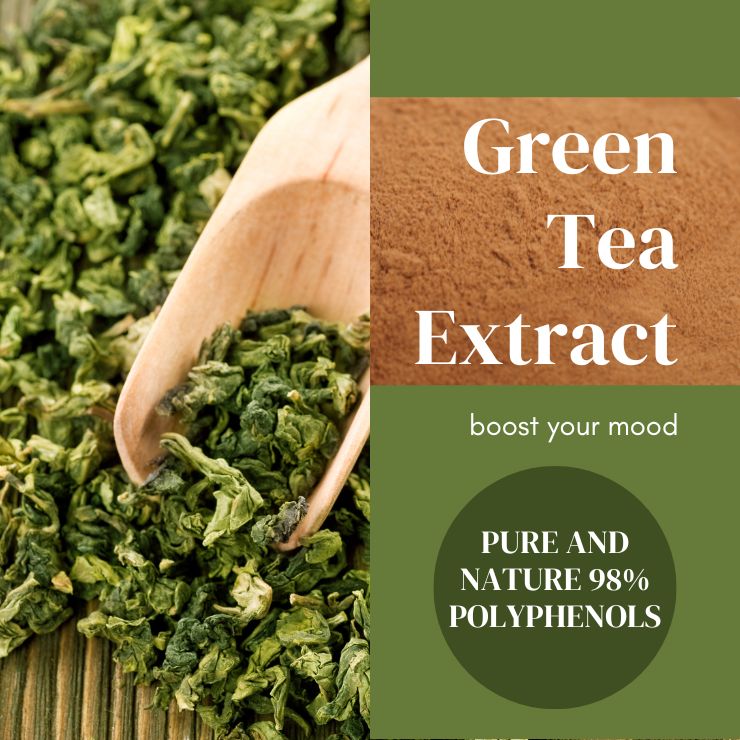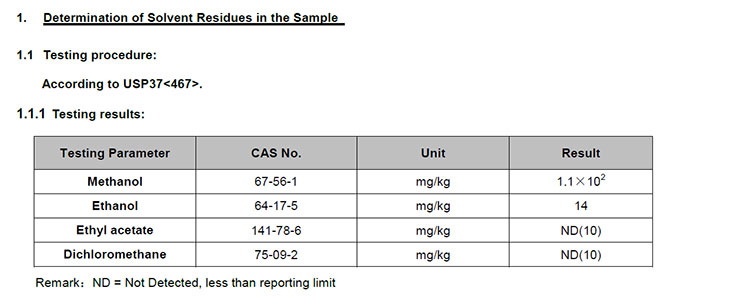What is green tea extract 98% polyphenols and how to keep safe?
Green tea extract 98% polyphenols is a concentrated form of the bioactive compounds in green tea leaves. Polyphenols are a type of antioxidant found in plants, and they are responsible for many of the health benefits of consuming green tea.
Green tea extract is typically made by steeping green tea leaves in a solvent such as water or ethanol and then removing the solvent to leave behind a concentrated extract. The extract is then standardized to contain a specific percentage of polyphenols, usually 98%.

Green tea extract 98% polyphenols flow chart:
- Harvest fresh green tea leaves from the tea plant.
- Clean the tea leaves to remove any dirt or debris.
- Steep the tea leaves in a solvent such as water or ethanol, or ethyl acetate to extract the polyphenols.
- Filter the mixture to remove any solid particles and impurities.
- Concentrate the polyphenol-rich extract by removing the solvent through evaporation or other methods.
- Test the polyphenol content of the section to determine the concentration.
- If necessary, further purify the area to increase the polyphenol concentration.
- Standardize the area to contain 98% polyphenols.
- Package the final green tea extract for distribution and consumption.
Green tea extract is often used as a dietary supplement and is believed to have a variety of health benefits, including:
- Supporting cardiovascular health by helping to maintain healthy blood pressure and cholesterol levels.
- Supporting cognitive function and brain health.
- Supporting healthy weight management by increasing metabolism and reducing appetite.
- Supporting the immune system by helping to prevent oxidative damage to cells.
- Supporting healthy skin by reducing inflammation and protecting against sun damage.
Keep it safe with low solvent residue in green tea extract 98% Polyphenols.
- Use high-quality solvents: Choose solvents that are safe for consumption, such as food-grade ethanol or water. Make sure to use high-quality solvents that are free from impurities and contaminants.
- Test the extract for solvent residue: Use analytical techniques such as gas chromatography or mass spectrometry to test the section for solvent deposition. This will help ensure the area is free from harmful solvents that could harm health.
- Purify the extract: If there is any residual solvent, it can be removed by further purification steps, such as chromatography, distillation, or evaporation. These steps can help to remove any remaining solvent residue and ensure the extract is safe for consumption.
- Ensure proper storage: Once the extract is purified and free from solvent residue, store it in an airtight container in a cool, dry place away from direct sunlight. This will help to preserve the quality and freshness of the extract.
- Label the product: Ensure that the extract is labeled clearly with the polyphenol content, standardization, and any other relevant information so that consumers can make informed decisions about the product.
Qherb solvent residual result of green tea extract

It’s worth noting that while green tea extract is generally considered safe, it can interact with certain medications and may not be suitable for everyone. It’s always a good idea to consult a healthcare professional before starting any new supplement.
Comments
Post a Comment